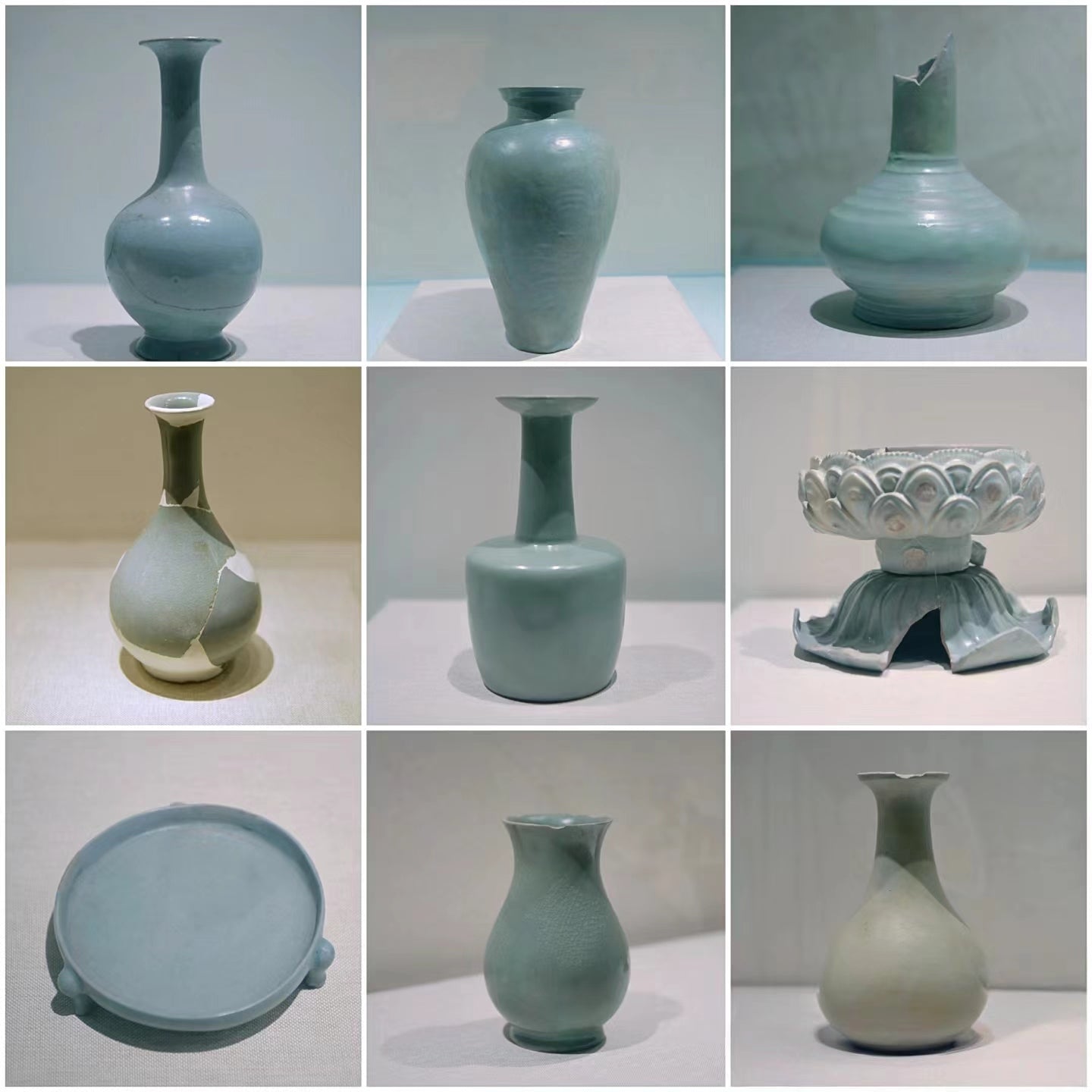
Song Dynasty Porcelains — Five Famous Kilns
The Song Dynasty marked the first golden age in the history of Chinese ceramics, earning it the title "The Age of Porcelain." During this period, ceramic production reached unprecedented heights, with kilns flourishing across the nation. The most representative of these were the Five Great Kilns: Guan, Ge, Ru, Ding, and Jun.
The Song era was akin to a vast ceramic garden, featuring a diverse array of white porcelain, celadon, black porcelain, and colorful porcelain, all characterized by their elegant and perfect forms.
-

Ru Kiln (汝窑)
● Location: Ruzhou, Henan Province
● Characteristics: Ru ware is known for its delicate blue-green glaze, often described as resembling the color of a duck’s egg. The glaze is smooth and translucent, with fine crackles that add to its beauty.
Ru ware is extremely rare due to its limited production period and the destruction of kilns. Only a few pieces exist today, mostly in museums and private collections. -

Guan Kiln (官窑)
● Location: Hangzhou, Zhejiang Province
● Characteristics: Guan ware features a thick, lustrous glaze with a distinctive crackle pattern. The colors range from pale green to lavender blue. The body is often dark and thick, providing a strong contrast to the glaze.
Guan ware was produced for the imperial court, and its name "Guan" means "official," indicating its high status and exclusive use by the aristocracy. -

Ding Kiln (定窑)
● Location: Quyang, Hebei Province
● Characteristics: Ding ware is known for its ivory-white glaze and fine, thin body. Decorations are often incised or molded, featuring floral or animal motifs. Some pieces have a metal rim, added to prevent chipping.
Ding ware was widely used and highly prized during the Song Dynasty. Its elegant and simple designs reflect the aesthetic values of the period.
-

Jun Kiln (钧窑)
● Location: Yuzhou, Henan Province
● Characteristics: Jun ware is famous for its opalescent glaze that varies in color from blue to purple. The glaze is thick and often has a milky, variegated appearance with splashes of contrasting colors.
Significance: Jun ware’s unique glaze effects were highly valued, and each piece is considered unique due to the unpredictable nature of the glaze application and firing process. -

Ge Kiln (哥窑)
The hallmark of Ge ware is its crackle glaze, characterized by a network of fine cracks (craquelure). This crackling effect is intentionally created during the firing process and is considered a desirable feature.
Ge ware typically exhibits two types of crackles: "golden threads" (smaller, yellowish cracks) and "iron threads" (larger, dark cracks). This dual crackling effect is one of the defining features of Ge ware.




